Why the Makgadikgadi Pans Are More Than Great Emptiness
To the few people who have even heard of Botswana's Makgadikgadi Pans, the name probably conjures a place of emptiness; a hostile landscape that animals avoid. Heather Richardson discovers it is teeming with life.
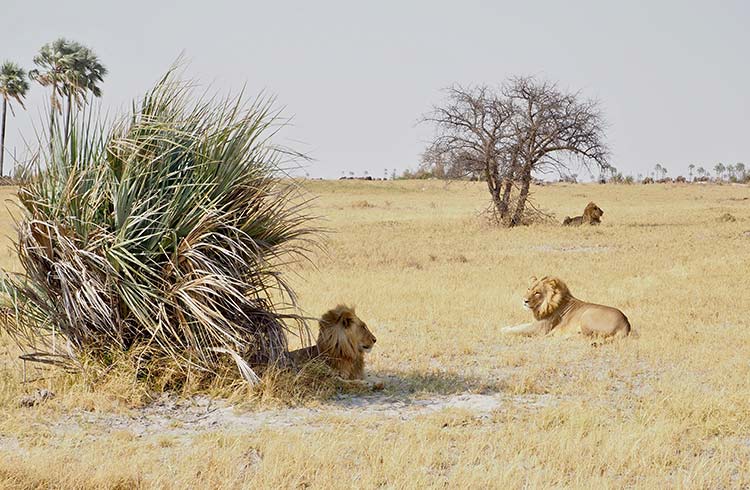 Photo © Heather Richardson
Photo © Heather Richardson
They call it the ‘great big nothing’. And, on first glance, Botswana’s Makgadikgadi Pans do appear to be something of a barren, inhospitable wasteland. But, after a few days exploring, I learn that there’s plenty of life that thrives here, from fierce lionesses and herds of elephants to the San Bushmen who have existed in this salty desert for thousands of years.
The Vast Salt Pans
Two million years ago, the Makgadikgadi, in northern Botswana, was a lake the size of Switzerland. Over thousands of years, it dried up forming a vast salt flat, one of the largest in the world and surrounded by the Kalahari Desert.
These expansive salt flats are peppered with palm islands and colossal baobab trees, some of which are of historic significance: Chapman’s Baobab, which collapsed in 2016 (it remains lying on the pans) and was estimated to be more than 1,000 years old, is inscribed with the initials of 19th-century explorer, Dr. David Livingstone.
After a safari in the Okavango Delta, we fly into the Makgadikgadi in a tiny four-seater plane, bumping along in the midday thermals for just over an hour. The second location on our Botswana holiday, we’re staying at Jack’s Camp, just outside the Makgadikgadi Pans National Park.
Wildlife
You’d think that wildlife would be scant in this harsh environment, but we are in for more than one surprise. On the afternoon of our arrival in the Makgadikgadi, we watch three bull elephants slurping from a nearby waterhole and nonchalantly wander right past our camp. We witness two lionesses with little cubs fiercely chase off a third intruding lioness from the thicket they’re sheltering in.
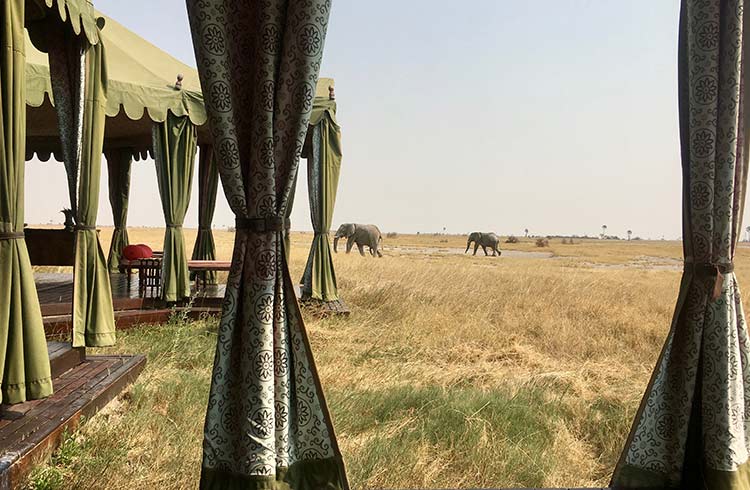
The next morning, we spot three young male lions, new to the area, eyeing a herd of wildebeest and zebra, while keeping watch for the resident dominant lion, whom we guess must be nearby. More associated with the Kalahari, we also see solitary brown hyenas and families of bat-eared foxes.
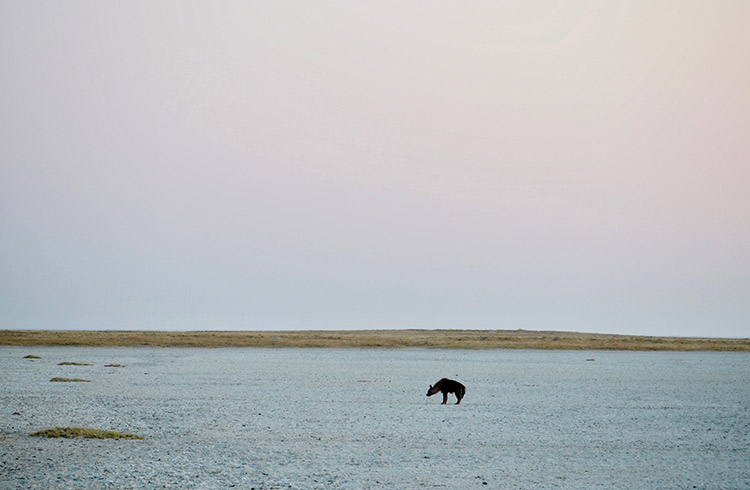
One of the most popular experiences at Jack’s Camp, and sister property San Camp, is a visit to the habituated meerkat colonies; these entertaining critters are always happy to use humans as convenient lookout posts, clambering onto someone's head for a better vantage point.
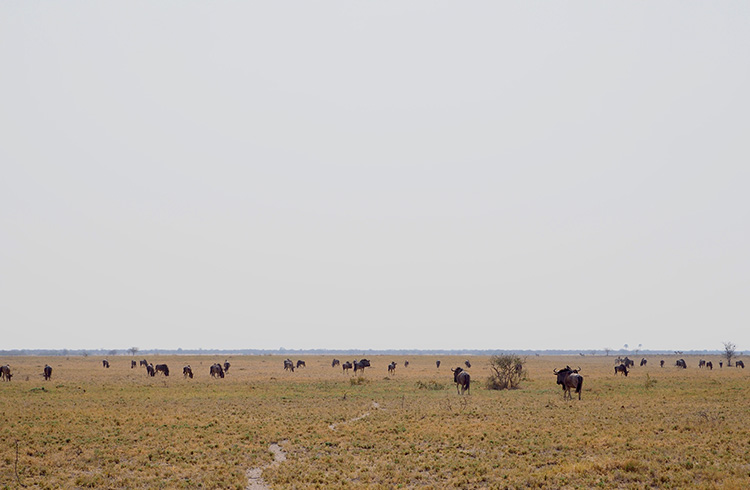
Walking with the San Bushmen
The San Bushmen have lived in Southern Africa for thousands of years; samples of rock art date back 70,000 years. Having suffered greatly at the hands of colonialism, the San – a collective term for the hunter-gatherers – today mostly live in Botswana and Namibia.
At Jack’s Camp, rotating groups of Zu/’hoasi Bushmen spend three months at a time in camp, leading bushwalks to share something of their way of life, and a little of their immense, in-depth knowledge of the Kalahari, with guests. We head out to explore with the whole group (around 20 men, women and children), learning about the root that provides water – carefully replanted after use – the branches that make the best arrows, how to identify toxic plants, and techniques to create fire.
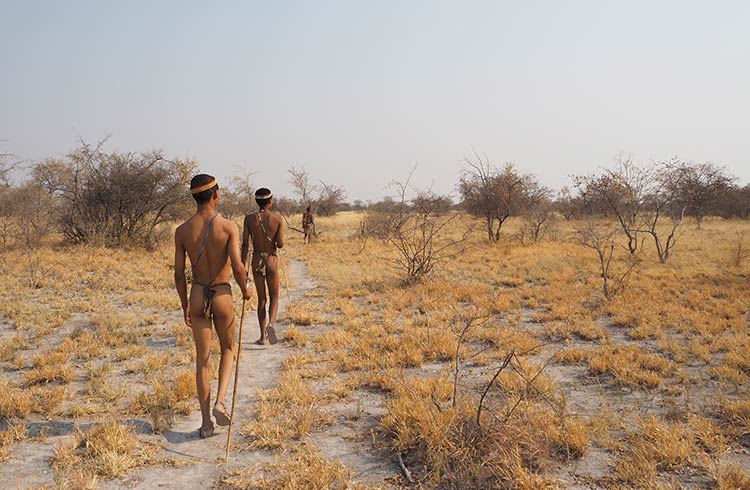
In the evening, we sit in on a trance dance, a ritual in which the group sing, clap and energetically stomp around the fire, until the healer slips into a trance, laying his hand over each person’s heart. Ancient rock art throughout Southern Africa often depicts the ceremony and the healer’s trance state. The ceremony can continue throughout the whole night; we slip back to our tents after a couple of hours and leave the dancers to it. Though this group are happy to have a few outsiders watch (our group numbered just six), a trance dance is not something just put on for tourists; traditional San people regularly perform the ritual throughout Botswana. Greg, one of the guides at Jack’s, says he has only seen the dance three times in as many years at the camp.

Quad Biking
As the peachy dusk sets in on our second night, we hop onto quad bikes, our heads and faces wrapped up in red kikois (traditional woven cloth) to protect us from the dust, and zip off across the salt flats. After a while, we come to a stop, the ‘great big nothing’ sprawling endlessly around us. Harold, our guide, tells us to walk in different directions for a count of 100. Our footsteps crunching through the salty crust, we each march off, sit – and listen.
It’s rare to experience true, absolute silence, but here it is: like the world has been muffled. We sit in our own company for the next few minutes as the sun sets, soaking up the stillness.
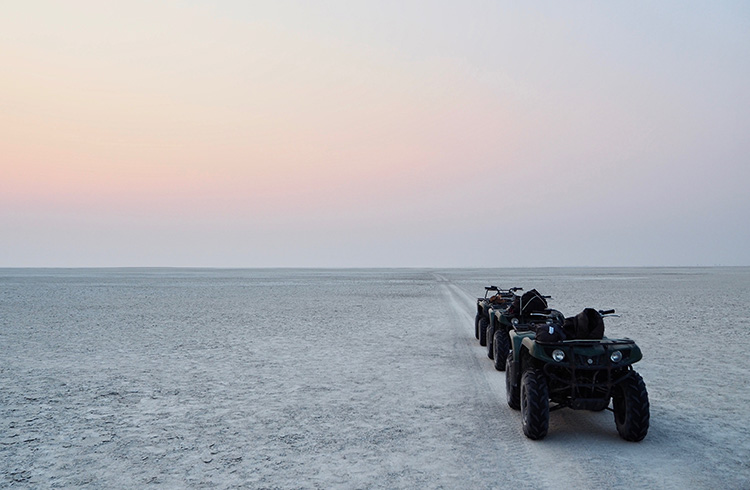
Sleepouts
With all this space and distance from civilization, the Makgadikgadi is one of the most sublime places to star gaze. When the sun dips below the horizon, we are able to spend the night on these ancient pans under a blanket of stars, with just the whisper of a gentle breeze to lull us to sleep.
Trip Notes
Safety
Botswana is a safe destination. Healthwise, you’ll probably need to take malaria medication – check with your GP.
Identifying ethical tour operators
Ask your operator or camp how they give back to the local community: do they employ locals or fund educational projects? Do they help combat human-wildlife conflict, e.g. by providing bomas to protect communities’ cattle from lions? Find out about their attitude to environmental factors, too: Have they cut out single-use plastics? Do they use solar power? Check online reviews. If you’re planning to book a package, use a resource such as responsibletravel.com.
What to Pack
Layers – bring a sweater and jacket for the cooler early mornings and evening. Pack light, loose-fitting clothing for when it’s hot during the day.
Pack closed-toe shoes for walks, plus sunscreen, a wide-brimmed hat and protective sunglasses. Binoculars are always useful on safari.
When to Go
The dry season (high season, from April to October) is the best time to see the pans at their most striking, and when you can explore the whole area on drives or quad bikes.
The wet season (November to March) is also appealing: the environment is much lusher during this period, herds of migrating zebras arrive on the pans and rates are lower with fewer tourists – but bear in mind parts of the pans are not accessible due to flood water.
Related articles
Simple and flexible travel insurance
You can buy at home or while traveling, and claim online from anywhere in the world. With 150+ adventure activities covered and 24/7 emergency assistance.
Get a quote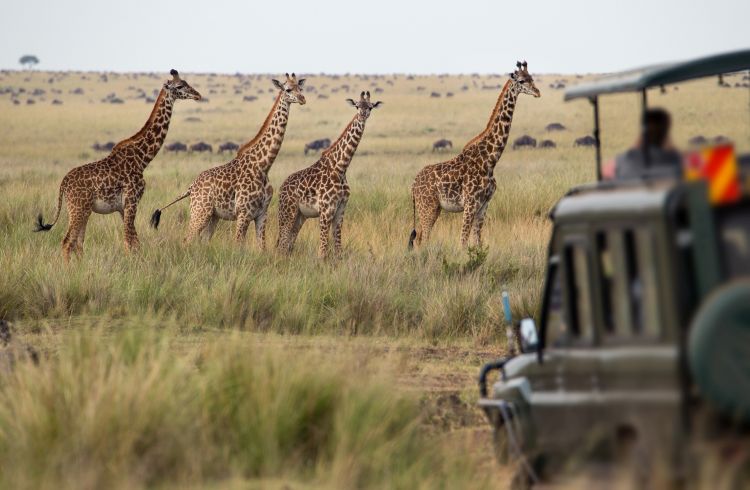

1 Comment
Is the Makgadigadi Pans Safe for tourists?